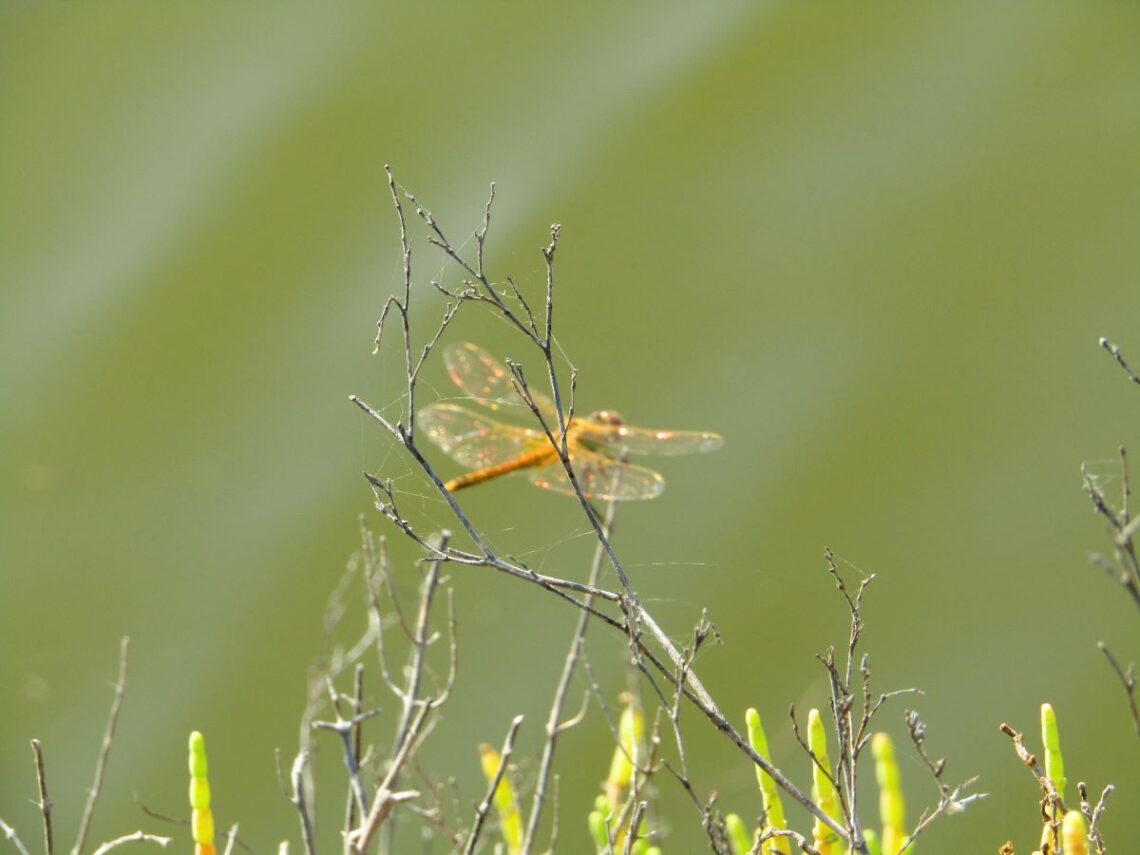
Find out why biodiversity is important with Núria Pou [interview]
A new report about the state of nature in Catalonia has just been released a couple of months ago and I have interviewed one of the coordinators, Núria, who explains everything about the biodiversity loss we are observing here in Catalonia and elsewhere in the world.
The interview is in Spanish with translated in English by myself and proof edited by several English native speakers.
We hope you will enjoy this interview and will understand why the biodiversity is important, why we have observed a biodiversity collapse in the last decades, what are the biodiversity threats and what we can all do about it to avoid further exctintion.
Biodiversity and the climate crisis are part of the same problem.
Every day now we talk about our global gas emissions but we tend to forget that if we loose animal and plant species, we will never be able to solve this climate issue.
If for any reason you do not want to watch this interview with the English subtitles, I have added the transcript word for word below.
Welcome to our Youtube channel Planeta Sana sponsored by World Travel Able.
Today we are going to talk about biodiversity.
We believe it’s an important topic we tend to forget about.
We talk about climate change, carbon emissions, but the truth is, the loss of biodiversity can have a domino effect.
That’s why today we wanted to talk to Núria Pau.
She is going to talk about a new report that just came out in 2020. A Report about the state of nature in Catalonia in 2020.
Welcome, Nuria.
Can you introduce yourself briefly and tell us about you, your experience, your current role?
I’ve been working for the Forestal Center of Technology and Science of Catalonia since 2009, and I work in an investigation group about the biology of conservation.
So it’s been a few years now that I have focused my work on biodiversity, on the current state of habitats and species here in Catalonia.
We have passed on this research to decision makers, in public administration for example, and to people who manage the natural protected areas. Because we had seen how complicated it was and how this information wasn’t always reaching these people, we set about remedying this.
From there, other projects came about, always directed at bringing information to decision-makers and finally, in the institution I am part of, the Forrestal Center of Technology and Science of Catalonia and others in the same field of scientific investigation here in Catalonia, I’m working and collaborating with the Observatory of the Natural Heritage and Biodiversity.
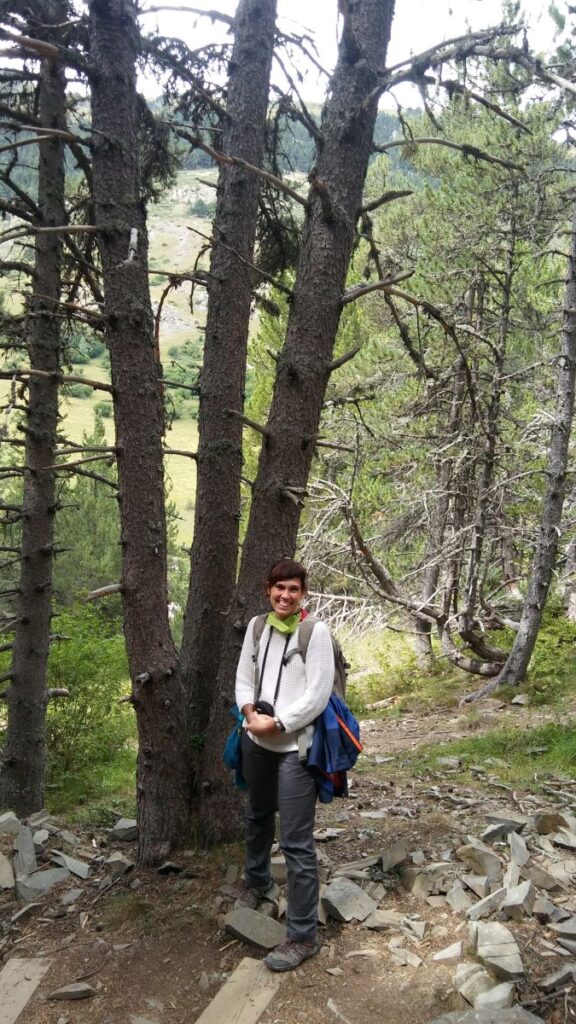
It’s a tool, really, as we are those research institutions united and working together with the Generalitat de Catalunya, with the Catalan administration, to use this information to help us optimise our conservation and management of natural resources.
Our first findings were published in December – the “Estat de la Natura en Catalunya en 2020” – which it was my honour to help coordinate.
Wow, that sounds fascinating! Thank you.
I’m going to ask you the first question on our followers’ behalf, who maybe don’t know about the challenge of biodiversity.
Why is it so important to preserve biodiversity, especially in a region like Catalonia? Can you give us some details?
OK, so biodiversity – or “the diversity of species, meaning animals and plants – is important. Not only in Catalonia but everywhere. We live with our back to the natural world; but the truth is, we – the human species – totally depend on it.
For example, our food and agriculture draw on nature… For us to be able to buy apples at the market, we need the pollinators to be able to pollinate the apple tree when it is in bloom.
There are ecosystemic services which humanity depends on, and without them, we can’t exist. So in the end protecting nature is also protecting ourselves.
That’s why it’s so important.
I put this example of pollination in agriculture, but we could also talk about the supply of clean water in the aquatic ecosystems, as the water we drink from the tap comes from natural ecosystems and the quality of it also depends a bit on what’s happening in nature, the air we breathe, the fact that the trees do their photosynthesis, also linked to the agriculture with the soils being productive to obtain food, also depend on the good quality and the conservation at the level of microorganisms in the soil. And all of this, well, we’re talking about every aspect of nature.
So, why protect it? Well, because we are part of it and our existence depends on it. That’s why it’s so important.
We talk a lot about climate change, about the climate crisis we are living in, but we also need to realise that the impact that we people have on the environment is also causing an ecological crisis. So Catalonia is not disconnected from this crisis. And it’s something we’ve highlighted in the report, so we have a responsibility as a region of the world, to protect our little piece of land and nature we have here in Catalonia.
Exactly, you explained it very well, especially as we often don’t realize that it also has an impact on our water supply, it may seem unbelievable but biodiversity has an extremely important role.
What are the main findings of this investigation?
Well, let’s see, as to the key messages that came out of this study, first, in summary, that we are not well. What we’ve seen that over the last 20 years, the populations of vertebrate and invertebrate animals native to Catalonia have decreased by an average of 25%. In other words, one in four animals has been lost here in Catalonia in the last 20 years.
As for the “why”, basically it’s the social-economic model that focuses on the obtention of resources in certain areas while neglecting productivity models in other areas – models that were perhaps more sustainable.
We have also seen in this study that this loss is not the same across all environments.
For example, more than 50% of the river, lake, wetland creatures have been lost.
In agricultural environments, meadows and pastures, it’s about 30% and in contrast, the figure drops to 10% in forests and forestal areas.
The report also shed light on the state of the sea.
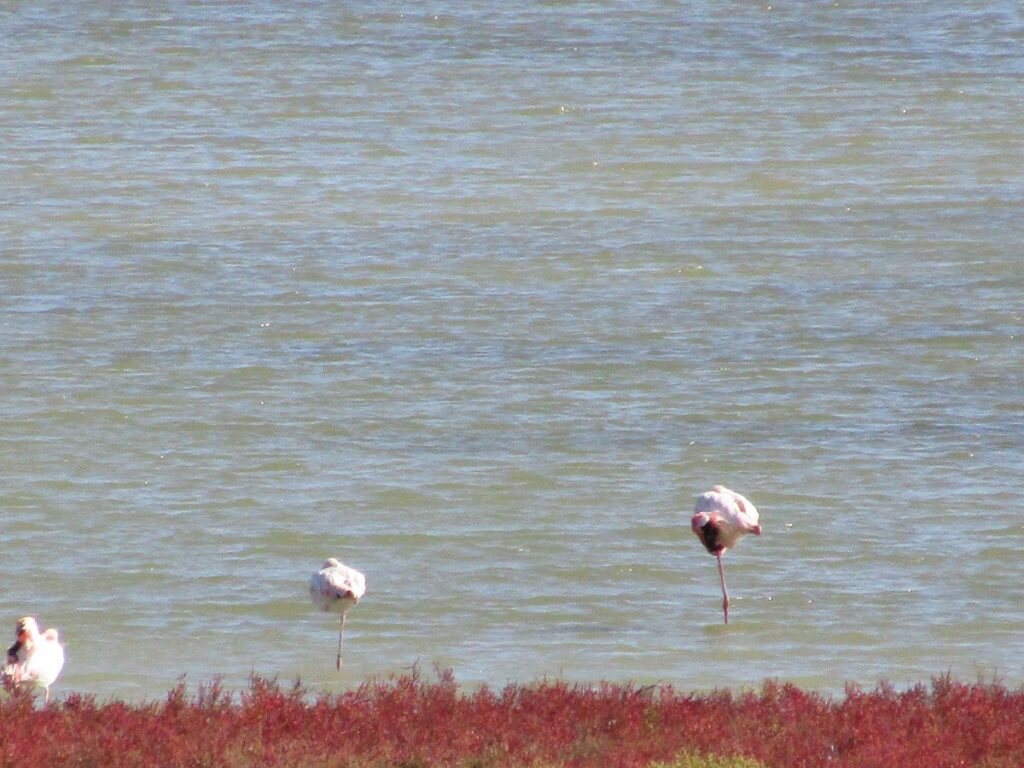
But what happens is, we don’t have a percentage that is clear compared to other environments, because the information in sea environments is missing. We need a bit more information.
Even so, the scarce information we have also shows us that we are not in a good way here either.
So what happens is, the eco-social model ends up spotlighting the changes that have come about in the environment: how our exploitation of the soil is altering the habitats where animals and plants live.
But it’s not only the socioeconomic model or the changes in soil usage that are the main motors of this change. Now we also have climate change playing a part more and more because the temperature changes the climate ranges where species can thrive. But also those extreme phenomena that we are experiencing which are happening more often, they are changing the environment. Species can’t adapt well enough.
But also, this global change that we are living through is affected further by the arrival in Catalonia of exotic and invasive species. It is obvious that this is having a major impact on local ecosystems.
There are species that have the capacity to adapt to the Catalan environment, and they are stronger than our native species. So if these two species compete, well, it’s well possible that the indigenious species will end up losing the battle; and it’s the invasive one that wins and that is not in our interests.
And basically all of this is what we have seen in this report, in a very summarized way, but we will talk about it more in detail later.
But at the end of the day, what’s happening here in Catalonia unfortunately, is very similar to what’s happening in the rest of Europe. We are not saying anything new… The dynamics in other parts of Europe are in line with what we see here.
It’s like everything is inextricable, everything is tied together.
Exactly.
You’ve already mentioned a few things I wanted to ask you, about the loss of wild fauna – one out of four – could you give us a few examples? I know you said it’s difficult to identify in the water areas, but if you have some examples of what has been lost in terms of species.
Let’s see, here we need to clarify something because the indicator that we’ve been using is quite new, and sometimes it’s not easy to interpret the findings. It’s not so much loss of species as loss of individuals. So, it’s like saying: we have the same species, but the individuals part of those species : how have they evolved over the last 20 years. And when we look at various species together, we calculate an average of this change of the number of individuals, and we see we have lost a 25% on average. But this doesn’t mean that all the species are losing population, there are species – for example… I’d give this example: concrete cases so that we can understand it better. The “common eel”, which is a species that has part of the life cycle of rivers, and partly in sea waters, well we’ve seen that in the last 20 years, their population has fallen by 90% here in Catalonia.
What does this mean? Well it means that we’ve lost 9 out of 10 eels.
It’s huge!
Yes it’s a dramatic example of what’s happening.
Other examples, like the “collalba rubia” which is a bird we find in open spaces, like pastures… Well, we’ve seen a drop of 43% in the same period.
The same goes for butterflies, we have seen an important regression.
90% of the “melanargia occitania” (western marbled white butterfly) have disappeared, due to the fact that we have increasingly fewer pastures here in Catalonia.
So all the species that depend on pastures to live are in decline, in regression.
On the other hand, there are some species that are faring better because we have focused on their conservation and recovery.
This is the case of the “nutria Europea” (Eurasian otter), whose populations have now recovered.
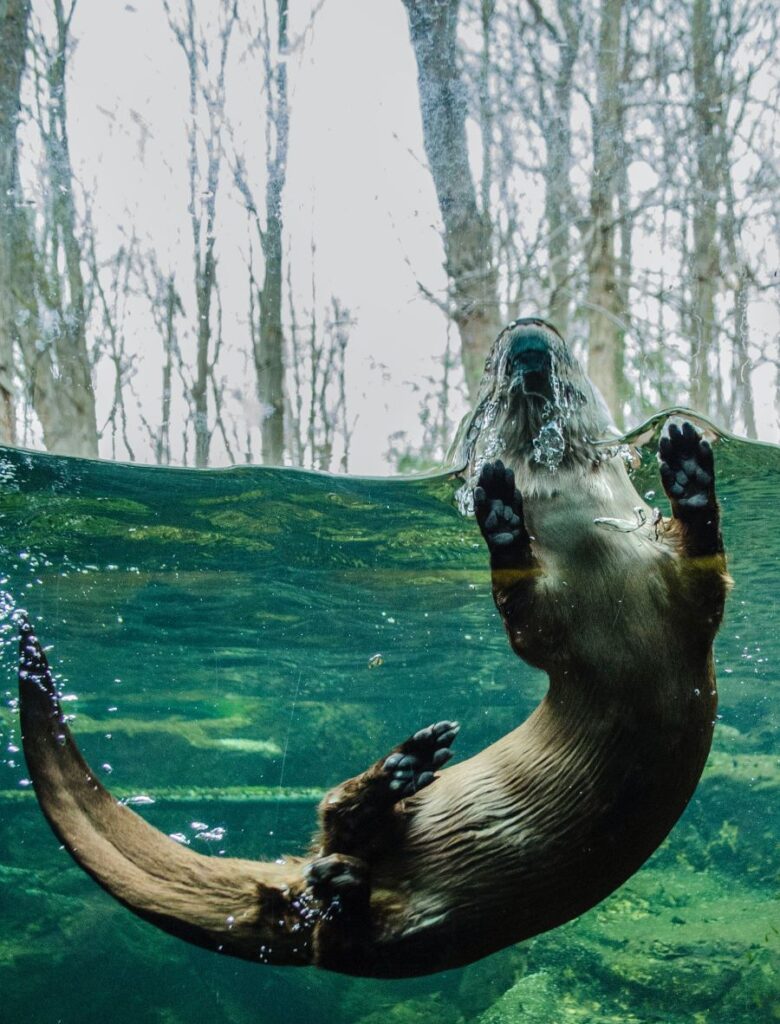
In the 90s, it was in serious decline: only a few individuals were left and it was very difficult to see any in the rivers of Catalonia.
But the administration made great efforts to reverse the species’ disappearance and organized a plan for its reintroduction 14’52
Which has resulted in a positive trend now, whereby we see increasing numbers and actually the nutria Europea now visible in many rivers
Also because in the last 40 years the quality of Catalonia’s freshwater has improved.
So, not everything is bad.
There are other animals that have benefited from the disappearance of the large predators as a result of the ecosystem’s imbalance.
This is the case of the jabalí (wild boar).
There have been sightings of wild boars in the city of Barcelona.
That’s for sure! I’ve seen a few myself…
Correct,
In urban areas, for instance, during the strict 2020 lockdown, we saw many wild boars daring to venture into towns and cities.
In search of food left in rubbish bins.
The wild boar is one species that has increased greatly in number but this is not a good sign.
It’s a symptom of an imbalance in the ecosystem.
Because the predators that could regulate numbers are increasingly scarce.
Well, that’s the kind of thing we are seeing.
So with all these species – a total of 321 species – that we have been tracking and monitoring over the last 20 years, we have been able to see how each has evolved.
Out of the 321 species, an average has been calculated with the change of each of those ones, and from there on, we obtained this data, this indicator of an average loss of wild populations of about 25%.
Actually we have used this indicator because it’s the one being used by the United Nations, and that has been calculated at a global level since the 1970s.
More than 4000 species have been registered since the 1970s, and we are seeing a loss at a global level of almost 60%!
Obviously it’s an average: there are species that have gone up in numbers and others that have decreased; but the final figure we have come up with is 60%.
Across the world, the period in which most species have been lost is from 1960 to 2000.
It reflects the situation happening here in Catalonia.
Give me a moment… Let me see if I can share my screen with you so that you can see the graphs.
In Catalonia (top graph), we see that between the year 2000 and 2019 there is a decline of 25% (Indicador Living Planet Index LPI) whereas we have this same indicator for the world.
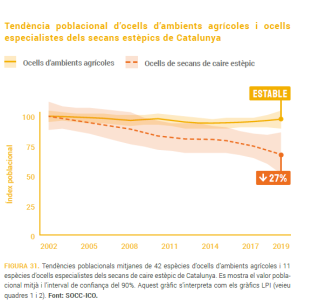
At the global, worldwide level, we see this decline but if you see, from the year 2000, it slows down, it’s not so pronounced, and it flattens out somewhat, although it continues to fall.
What it shows is that Catalonia isn’t spared the fate of what is happening globally.
I’m pretty sure that if we had data prior to the year 2020, we’d see a trend similar to the global one.
Environmental policies are now making more efforts to reverse those trends, and that’s the most relevant information we were able to get out of this report.
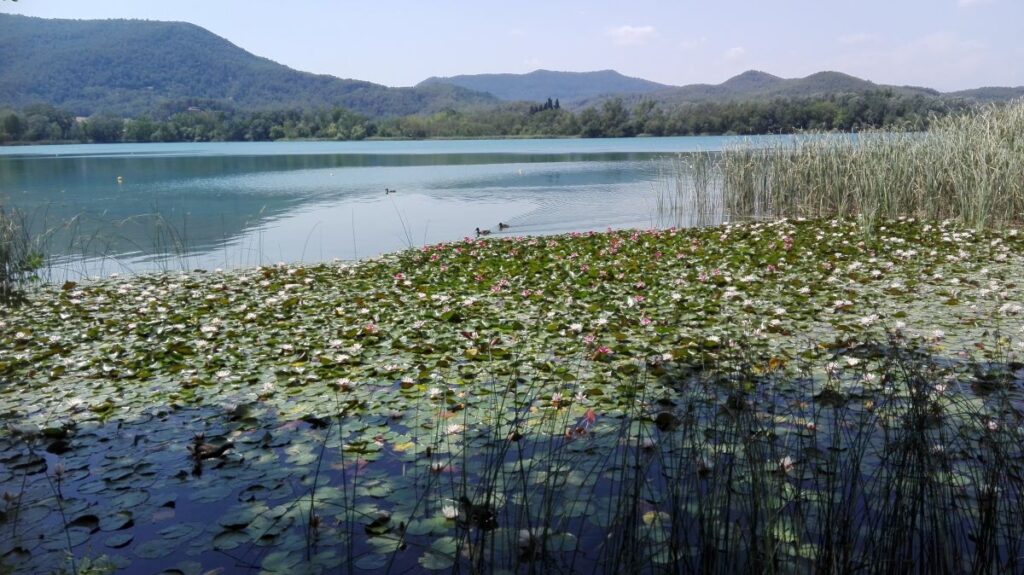
Thanks for sharing this information.
The other thing I wanted to ask you, well, you’ve already answered to many things, especially related to the causes of this alteration.
But could you give us some examples and explain a bit more about this usage of the soil, and the exploitation. What are those changes exactly that have been done there?
This is a very good question!
Let’s see if I can explain it in a way that can be understood easily.
In the changes of usage of the land,
imagine you’re looking at a photo taken from a plane, for people like you, expats, who share a lot of those pictures.
Probably French expats like you take a plane quite often, right?
Yes, in the past…
Yes and from the plane it’s quite easy to see fields, cities, forests, more or less, we can identify the different categories, right?
The usage of the land is showing exactly this.
A part of the Catalan terrain is used for agriculture, another part is used for forests, and on top of that, you have the landscapes of cities and villages, but also, including the transport infrastructures, roads, motorways, …
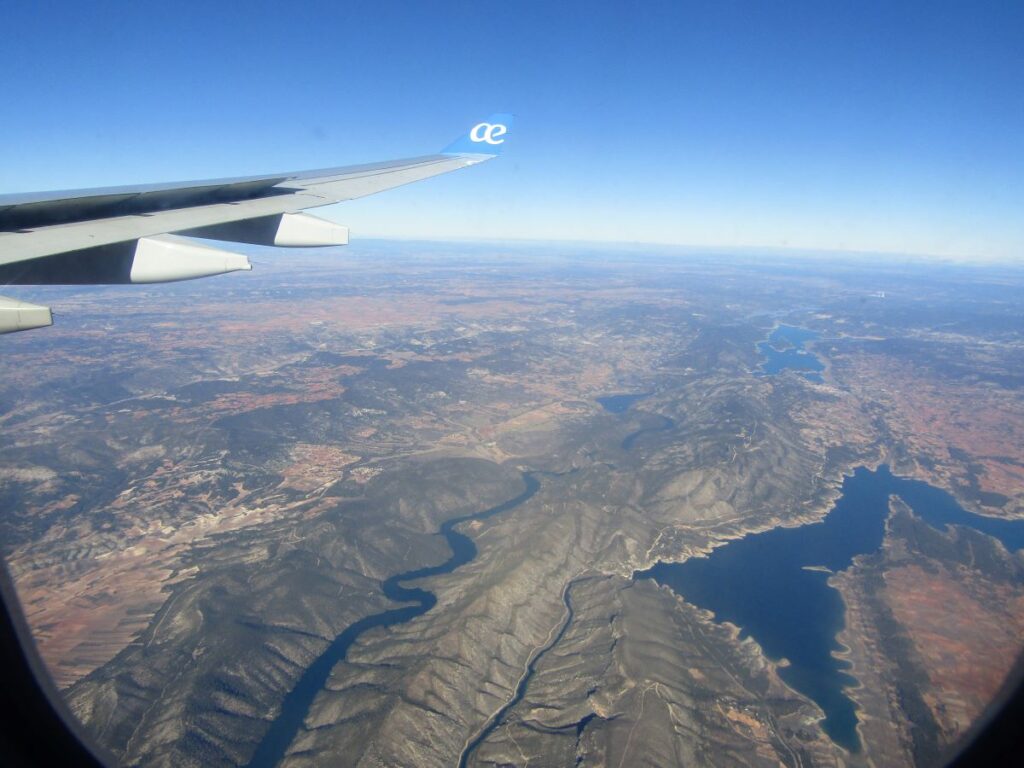
So, what happened in the last 20 years?
In the case of agriculture, there has been a withdrawal of farming and cattle breeding activities, in the areas where it’s less profitable.
So the activity is less profitable for example in the mountain areas, where fields are steep, and make it difficult, this activity has been transferred to areas with more plains, where it is easier.
But the activity in the plains is not the same as the activity we had in the mountains.
I’m referring to the Pyrenees, but also mid mountain, mountain like Pre-Pyrenees.
Or inside areas of Catalonia…
What happens? The activity that has remained is a much more intensive agricultural activity , using a lot more agrochemical fertilizers, pesticidal herbicides, chemical fertilisers.
All of this has obviously an impact on the environment.
So that’s what happens in the plains.
But what happens in the areas that have been abandoned?
Where there is no longer a farming or cattle activity?
Well, simply the forest got its space back.
It’s a dynamic system: plants extract seeds, resprout.
They have slowly occupied this pasture where before there were cattle that were consuming the new little trees that wanted to grow, well the cattle were eating it and this kept the habitat.
Well what happens now is that these cattle are no longer there.
The habitat is closing down, and we are losing a habitat that is necessary for those species that belonged to those areas, animals and plants particular to this open space.
For example the butterflies.
Butterflies are a species, sorry they are a taxonomic group of species, that usually find their food from those typical plants living in open spaces like the meadows and the pastures.
What happens? From the moment that those meadows and pastures disappear, the forest is closing in and those plants that butterflies need for the biological cycle, well, they are not available.
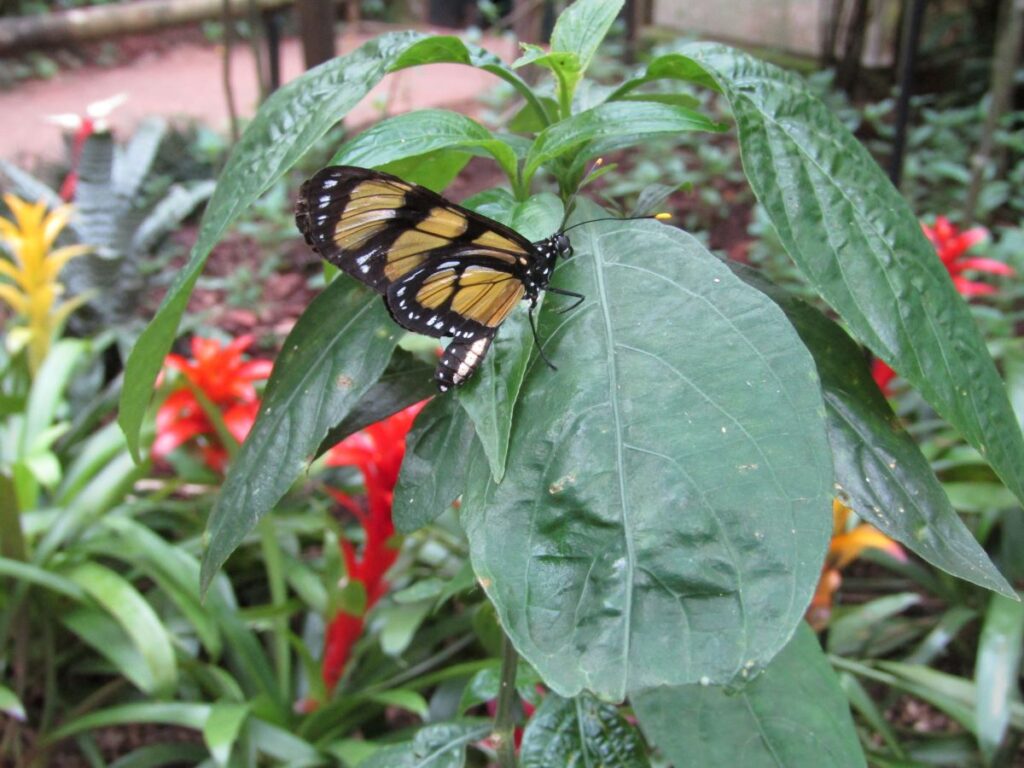
This implies a decline in the populations of butterflies, that here in Catalonia we have followed through a program to monitor butterflies since the 90s; well we were able to quantify in the case of the pastures, the typical butterflies of the meadows, what kind of regression they had in the years 90 up to now, well, we have noted that we have a regression of about 70% of the butterflies, meaning, the populations of butterflies dropped, they lost 7 out of 10 individuals.
Also, because this monitoring program had those points of samplings distributed over the territory, we figured out that in some spots, we were starting to see the extinction of the butterflies.
This doesn’t mean that the species has completely disappeared from Catalonia.
It’s there, but let’s say that now it’s not in all the areas it used to be.
And little by little it’s present in fewer areas because it doesn’t find the habitat that it needs to be able to survive.
So when we talk about the usage of the soils, we are mainly considering this: the impact that activities have on a territory.
And on the other side, we have also talked about the fact we are losing farming land, in exchange, we get more forest land, although it’s a young forest area, so it’s not the kind of forest that brings the ecosystemic services that more mature types of forests would bring.
And there is another factor: the population of Catalonia has increased.
And in 20 years the increase is more than a million inhabitants.
So obviously we need more houses, more towns, more industries, meaning the urban terrain also increased.
So what does all of this mean?
Well, for example, right now I can’t remember the exact percentage but…
I think that about 30% of the Catalan population are living in the first few kilometres from the coast.
This is a factor of threat for the coastal habitats.
For the beaches, for the sand dune habitats, and also we are building, taking space over the sea: we are building marinas, well the habitats of this first line of the coast, the habitat of Posidonia, habitats of algaes typical of the seabeds, well they are occupied by those harbour constructions, to respond to the demand of Catalan society.
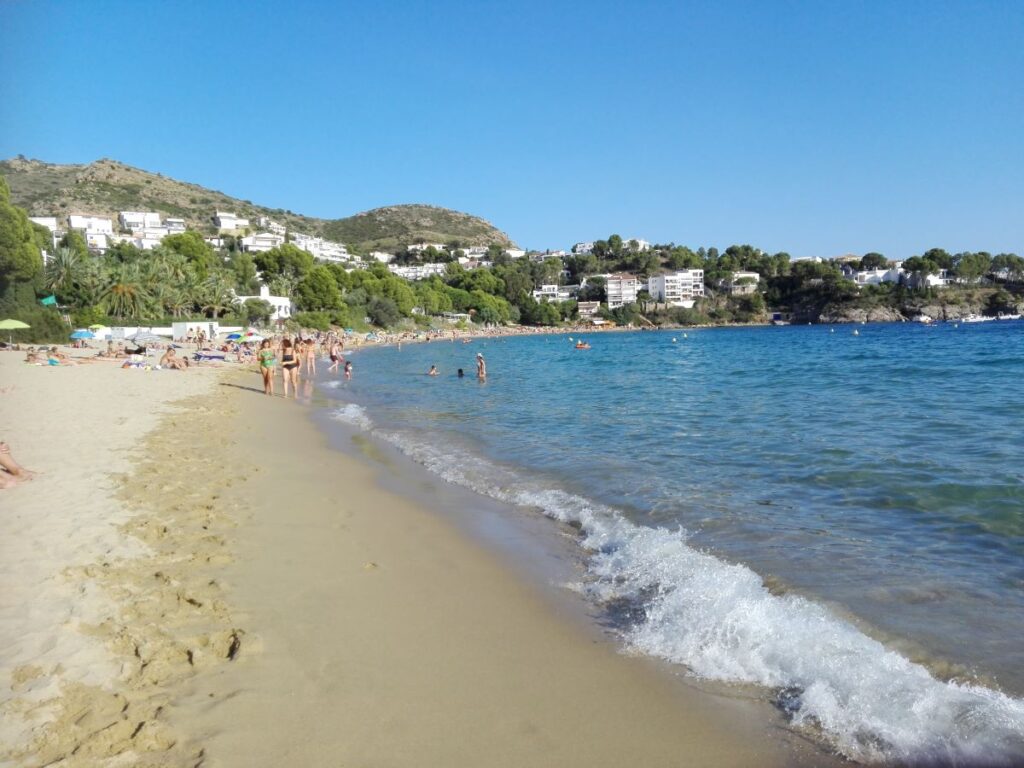
So when we talk about the terrains, we talk about all of this.
And those are the main problems, the main drive of change here in Catalonia that has a direct impact on nature.
Yes that’s something that we see a lot in all the countries.
For example I had seen a program talking about the quinoa, I don’t remember where it was, probably Peru, but they were saying the same thing.
In the past they were growing it in mountain areas, and now they have changed their way of working to be more efficient, to be able to sell more, and they have moved to flat areas, and then they have lost a lot in biodiversity, and now they have lots of issues with the soil.
It’s everywhere. I see it as well in France.
This has an incredible impact on all of this.
The next question is how we could change our impact.
What socio-economic models could help avoid this biodiversity loss.
If you have some ideas, it would be great to share!
Well, let’s see.. This is not an easy question because,
Yes I can imagine…
The truth is, how to find socio-economic models that really benefit biodiversity… Right now, a model, I don’t know…
What I can say, there are actions. Actions that help, that benefit us.
For example, sure, we are seeing that the loss of farming and the intensive animal farming in Catalonia bringing a loss of species living in open spaces, so as consumers, if we buy products that come from this intensive animal farming, we are helping this activity to continue…
So the consumption of ecological products may benefit nature.
In the document, in the report that we have presented, as well as saying that we are in bad shape, we put examples of things that work.
And we see that the ecological agriculture, the traditional agriculture, all this type of agriculture that is more sustainable, that protects nature, that doesn’t use agrochemicals, that doesn’t transform the soils, that maintains traditional practices, well, choosing this kind of agriculture when one goes to the market, it has a direct impact for nature.
All these are types of activities we can have at an individual level as consumers.
Also important: buy seasonal products. We always want to have watermelons in the fridge.
Well maybe we can adapt our diet to what is available in nature at every moment and that also brings a positive impact, because you end up buying more local products, instead of products from other parts of the world where they also have their impact where they are produced.
Then also, in the end, everything that we consume can have a positive or negative impact on the environment, as well as on society.
So when we go shopping, when we go to consume, let’s ask ourselves, what options we have in front of us, what is available – since we have the capacity to acquire – which is more beneficial for the environment, compared to other options.
Use those criteria by which we have to choose how we consume, because at the end of the day, we don’t realize it but, how we consume ends up having a much bigger impact than what we think. For nature and the world.
Right, because we think, we are only one person, but multiplied by 7 billion, it has a very important impact.
Right, the other day I was watching an interview, I’m sorry I can’t remember now who was talking, but he made an interesting reflection:
With the change of the consumers in an individual way, we won’t reach a change at the global scale, but without the change of the consumers in an individual way, we won’t reach this change either.
Obviously, there are the government and institutional establishments, who have a huge power to change things, but if they make some changes but on the other hand from the grass roots there is no change, how we consume and how we decide, it’s not going to be a real change either.
So we need to all work together towards this direction, towards a fairer economy, more respectful towards the environment in our country and then in other parts of the world.
More sustainable in the end.
Correct.
This report that you have done is great, I think it has the potential to help a lot.
Do you know what measures have been put in place since its results have been revealed?
That’s a very good question.
This report was out in December 2020. And we are now in January.
So obviously very few measures have been taken in so little time in Catalonia since December.
Also because of the political environment where we are today.
The current legislature is about to be finished, elections are coming up so the decision-makers are not going to risk making big changes.
But what’s important to know is that the goal of this report is to be the first of many, right?
Here in Catalonia, in recent years, in 2017 a strategy was approved for the conservation of the natural heritage and biodiversity.
It’s a strategy that sets the lines of action of the government, to preserve nature.
And it’s not a strategy only for nature, but it also addresses the industrial sector, the agri-food sector, fishing, all the sectors of the society.
This strategy demands the involvement of us all.
So what the current report is trying to achieve is kind of setting up the starting point.
The strategy was approved in 2017. Sorry, no in 2018. I was wrong.
In 2018, the starting point before the implementation is this: we have a loss of 25% of the population etc, but this strategy needs to get implemented.
The strategy is to set up a final date to be able to achieve all the goals. Reach the goals in 2030.
So, for sure, in 2030, the exercise we have done now will have to be repeated.
To evaluate the efficiency of the strategy, if the implementation of this strategy has brought changes in the trends we have seen now.
But before, this observation, this scientific association with the Generalitat, that tries to bring information about biodiversity to those who make decisions… Well before reaching 2030, the observatory needs to bring more information to help implement this strategy.
Because the decisions that need to be taken in order to implement this strategy need to be maintained, based on a scientific basis.
If we say that we want to take more actions for norms, conservation policies, or more recovery policies for the flora, well we will need to know what are the plants that really need investment in their recovery, where will they put the money.
But not only where we are going to put the money, deciding in which plants, but also say where these plants are located, and what can harm them.
Because if we know what causes harm, we will then know for sure how to act to stop that harm, what measures we can implement, so that the plant – I put the example of a plant but it could be any species – will be able to manage better and help its conservation.
So for the implementation of the strategy, the observatory will play a fundamental role, providing information. But it’s also important to highlight that this summer, in Catalonia, the legislation to create the agency for nature in Catalonia was approved. So the law approved the agency, but we don’t have the building, the administration managing it, the people working in the agency.
We need to implement this law, see how the agency coordinates the elements that have an impact on the environment, to help in the conservation of nature, considering what the strategy already takes into account.
So I believe that in Catalonia, we are making efforts. We could do more, obviously. And what’s key is to involve all parties around conservation and the impact on nature.
But for now, this first report is telling us what the starting point is, and showing how everything that we have mentioned previously is going, and in a few years from now, do it again and see where we are in that moment. What are the positive changes we have made? We hope that there are many!
But at the moment we have a tool to compare.
Not only compare, but also identify, where the main issues lie.
We have seen that it’s in the rivers where we have seen a higher biodiversity loss than in other areas.
We have seen for example that we have lost 9 out of 10 native fish, while we have seen that the invasive fish species have almost doubled.
So maybe we can prioritize where we should put the most effort, like the rivers, lakes, and humid areas; it would be a good place to start.
Okay, so imagine now that you have all the powers in your hands, and you can decide yourself all the ideal measures to resolve this biodiversity loss issue. What would you do?
This question is difficult because you put me on the spot.
Normally I am the one who provides the information to others so that they can take decisions.
What I would do first is to ensure that all the actors involved get to talk to each other.
I would sit them all around a table, I would share with them the information that we have, I would involve economists above all, because we also live in a society that is highly relying on money, unfortunately, and it seems that, we don’t act until a problem touches us in our wallets.
So that’s what I would do. Put everybody around a table. All the actors who have the capacity to influence conservation.
And I mean, from the industrial companies that are working in Catalonia, from the agriculture sectors to education, because educating is very important for conservation.
I would give them the information to be able to take decisions and implement the strategy.
Because at the end of the day, this is a very good proposal, and it includes the vision of many sectors.
So I would look for the best way to implement this strategy.
And I would give them this exercise that we use a lot in the scientific arena: I would give them different scenarios: various economic scenarios, for example, what does it cost to lose biodiversity and nature here, right?
Because if we look at the cost of not having any more pollinators, in agriculture…
I haven’t mentioned it yet, but what the report also highlights, is that the effects, the loss we have in invertebrates is much bigger than the loss we have with vertebrates.
By invertebrates I mean insects, molluscs, an entourage of animals that are also there and, though they take up less space and therefore are less visible, they are also present and they have a role, and their population has decreased a lot. They are being seriously affected, so evidently, if we make an economic calculation of what it would cost us to not have any pollinators anymore, or what it would cost us to stop using some chemical products that affect them gravely, I think the scales would tip in favour of giving up on using some agrochemicals, and strengthen the presence of pollinators.
These are very complex issues, and in my opinion what we need is dialogue between all actors, in order to find a solution through common consensus, because what we have also seen in this crisis is that the economy is very weak in this country.
So we need to be able to juggle these activities, being extremely conscious that we can’t afford to keep losing biodiversity and nature because the effects that it can have on us and on human health are extremely serious.
I think the problem is also being able to understand that we need to have a long term vision, and not only thinking about what kind of money we are going to make this year.
Because if you only base your decisions on the short term, you can’t make the right decisions.
I think the consequence of this way of thinking has left us behind.
And now with all the problems we are facing, we realize that we actually need to act now.
Because we are reaching a point of no return, and we need to act now.
And we see it as well with Covid because we were always thinking that climate change and biodiversity loss were not so important, but now we see it can lead to this kind of problem.
And it could be even more serious. So we need to get our act together!
Correct, I agree on that. Actually, there are many institutions like the international board for biodiversity and the ecosystemic services, that are associations of scientists at the international level, who have already pointed out that in the end, COVID19 is only a symptom of the very serious ecological crisis that we are experiencing now.
and that the health of our planet is completely linked to our own health.
Exactly
Now I wanted to ask you a little bit more about the forests, what you were mentioning earlier, is that we can see that there is more woodland in Catalonia but that the trees are not mature.
Why is it so important that woods are mature?
Let’s see. It is important because… How can I explain it to you?… Basically, the maturity of a woodland can be translated into services. Services given by the woods.
So a mature woodland, with a variety of species, with trees of a greater height, bigger, higher, with the presence of deadwood on the ground, in its own ecosystem, provides ecosystemic services to the species that are particular to this forest.
For example, the mature woods where the trees are older, allow us to provide shelter to many species that live in the cavities of those bigger, higher and older trees.
For example, we have the great spotted woodpecker here in Catalonia which is a type of bird that we find in mature woods, because that’s where it will find thicker trees where it will be able to find a shelter, as well as being able to find food.
Another example is the bat, the Mediterranean horseshoe bat or the moustachioed bat, those bats that live in the cavities of those old trees.
So obviously, if we have a woodland that is not mature, young forests with thin trees, those are not favourable for the presence of those species.
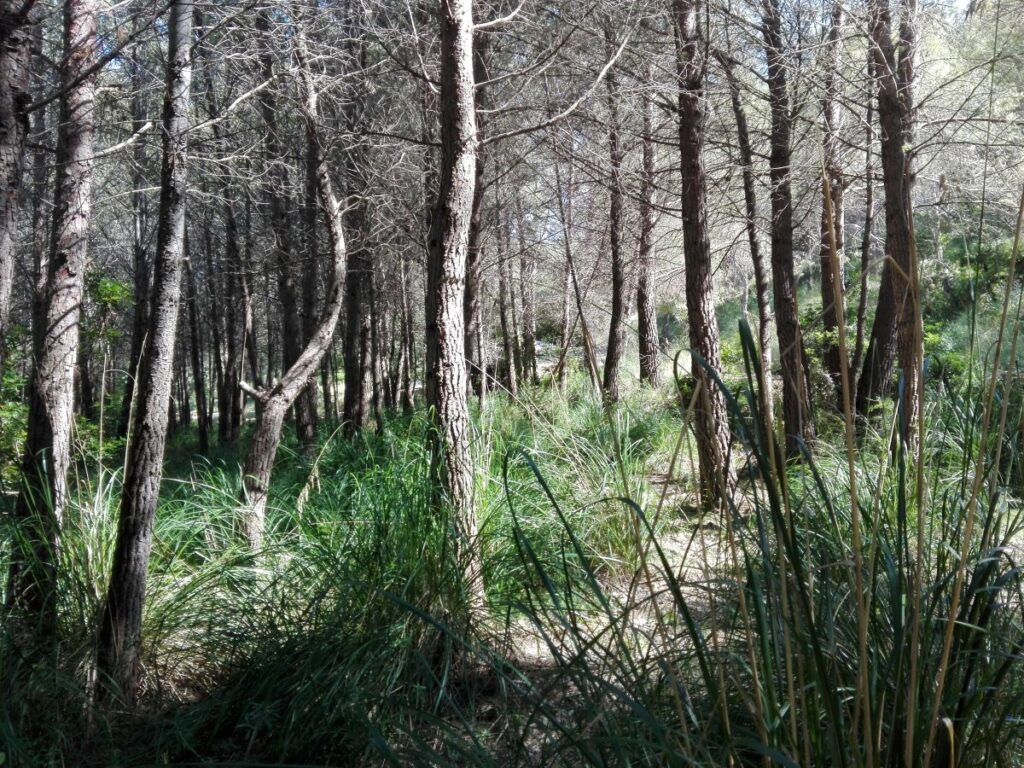
I gave this example of shelter, but we could also talk about food coming from the deadwood.
There are some insects that feed on this deadwood.
For example here in Catalonia, we have the Rosalia longicorn or Alpine longhorn beetle, it’s a type of blue beetle, very beautiful, or the great Capricorn beetle that has those kinds of antennas. Well, those species are protected at the European level, and Catalonia being part of Europe needs to abide by the European laws, so these species are protected at the European level. And they have an important role in nature here. If they don’t have an appropriate habitat, well they can’t live. That’s why mature woodland is so important.
But unfortunately here in Catalonia we don’t have many of those mature woodlands..
And I also wanted to ask you about measures that are being taken right now to protect the woods, so that they are able to mature, because we always say that we are going to plant trees, but then how do we protect woodlands so that they become mature…?
Well here in Catalonia, there is no need to plant trees.
No here obviously not, but something we are usually hearing about as a solution is to plant trees, okay but how do we protect those we already have, the ones that are mature, and as you explained well, are much more important?
How can we avoid wildfires, how could cattle help in this, if shepherds can help in this, I don’t know. If you could give us some information about this topic.
This is complicated.
This is not only about conservation but also about climate change.
Those are problems that have a lot of faces.
First, about what you mentioned related to planting trees, I said no because one of the problems we see here in Catalonia is that we are losing open habitats, those habitats of pasture and meadow. So what we have more of is woodland. But what happens is, when we get in the woods, what we are seeing is that it’s very young, and it doesn’t have the capacity to provide those ecosystemic services that I have mentioned earlier.
Ok so let’s see how I can answer this without being misunderstood.
The first point; we need to conserve mature woods, but we also want to recover those open spaces.
So the fires that are always considered as something negative, and they are when they are causing material or personal damage, obviously. But when a young wood gets on fire, it also provides an open space, which is an opportunity for those species that until now were losing their habitat.
Well it provides you with an opportunity to recover those areas for those species. This open habitat they need for their survival.
We shouldn’t forget that, despite the social perception we have about fires, they also are an ecological factor, that has always been there.
The name of the Pyrenees comes from that: “Pyri” comes from the word fire, because the Pyrenees were a region that was catching on fire very often.
So the fire is an ecological factor we need to keep in mind.
And it can provide us with this open habitat, when the disturbance is of low intensity of course, I mean we don’t want it to burn a huge area, like a whole region.
I mean controlled fires, or of small areas, and above all, if those fires don’t affect mature woodlands.
To preserve the mature woodlands, the first thing is to identify them!
And then for example there was a network of areas that protected the mature woodlands of Catalonia, and let them evolve freely
This is currently a scientific debate, from the detractors, to the defenders of letting the wood evolve freely, meaning, without the intervention of men.
Each case needs to be evaluated separately. The viability, if it can be done or not, also depends on the forest species that we have. The growth of an oak and that of a pine is different.
So we need to study every case properly, every patch of wood, and see what it allows us to do.
But to promote the mature woods, we can indeed take actions with the young woodlands.
For example, clear some space, bringing the density of the younger woodlands down, so that the ones that have a higher reach can continue growing and reach greater heights.
By doing this selective felling, you can also leave dead wood on the ground, imitating the typical woods of the mature woodland, giving shelter and food to those species who need it for their vital cycle.
So it’s complex, this matter of woodland management.
Because now I have put this example, thinking of the management for improving the conservation of species typical of mature woods.
But we could also do other things aimed at a better adaptation to climate change, at a better absorption of CO2 by the woods.
We can also focus on the hydrological regulations,
because the more woods we have, the more water we consume.
So we also need to see the availability of the water that we need to have
So, combined with recurring droughts, the management of forests is very complex, and we need to design a plan at many levels to be able to decide accordingly how we can help through management.
Obviously, what you mentioned earlier about the shepherds, cattle, etc, obviously recovering the cattle activity,
Which existed not such a long time ago,
well this can be a win for biodiversity, as long as this is handled in a sustainable way and suitably for conservation
Okay.
Well, the last thing I wanted to ask you —
but you have already mentioned this topic ahead of time —
about our actions as citizens.
What actions can help preserving biodiversity?
How can each one of us participate proactively and at all levels,from ourselves, to our mayors, our regions, our country, the European Union,at the global scale?
You have already mentioned
eating in a more sustainable way.
Try to eat seasonal food.
I don’t know if you have any other ideas at all those levels, right —
what other actions can we take?
Yes, indeed, we can do a lot of small things.
At the end of the day, the main idea is, place nature in the centre of all decisions.
When we decide something and when I say decide I don’t only mean the food we buy in the market that’s only an example I gave earlier.
We can also think of nature: the effects on the climate, the impact of our actions with things as simple as, what energy are we consuming, where do we invest our money?
The projects where we invest our money or the banking organisations also have an impact.
How do we vote?
You know, in the end, if we take into account the factors of nature and climate change in all the decisions we take, we can make changes that end up influencing our environmental impact as people.
Moreover, if we want to be even more active — because this is about changing a few habits, but without expending a lot of effort —
For example, to help preserve nature.
What we are seeing, is that we need to know it well.
We need to know where is this nature as we mentioned earlier
Know what is happening to her,
And there are a lot of scientific projects based on the help of citizens here in Catalonia. Projects that are scientific projects led by scientific institutions from the region encourage citizens to participate, simply by gathering the information they give.
Very simple things, like for example there is a project called “Pajaros en el Jardin” (birds in the garden), and it simulates to some extent a project that has had a lot of success in the UK, and is as simple as this: the people in their homes give information about the birds they see in their garden.
If not in the garden, it can be from their balcony.
Or other projects; for instance, there is a scientific platform for citizens called Ornito. With this, if you go on a day trip and you see any species of bird, you can inform them about your observations.
There are online platforms that give us more information about what we have in the sea.
Sea Watchers.
Yes I have seen that one.
Yes, sea watchers, people who dive can bring a lot of valid information if we take into account the lack of information we have in those marine areas here in Catalonia.
It could also be monitoring the exotic species.
It’s been a few years now here in Catalonia that there is a scientific platform for citizens.
There is an app that can be downloaded on our phones.
It’s called Mosquito Alert, the goal is to find out where the tiger mosquito is.
And when somebody sees in spring when we start to see those species, you have the ability to inform.
Because in terms of health it is very important to control this species
because it transmits disease and has caused issues for populations.
So there are actions to control the expansion of the species.
And this app provides us with good information, especially for those who manage this.
So if anybody is interested, here in Catalonia there is a commission for citizen awareness that is part of the Generalitat de Catalunya; if you search for the keywords “ciencia ciudadana catalunya” you will be able to find all the initiatives to participate and provide information and help proactively to get to know our nature better so that we can manage it better.
And if you are up for it, you can do even more by doing voluntary work for environmental programs with many entities that work for the conservation of nature by cleaning rivers, restoring areas, and for example, here we have a network for the conservation of nature.
In Catalonia I think it’s the XCN [Xarxa per a la Concervació de la Natura] you can find it on Twitter.
Doing an online search for sure you’ll find it.
And it collates all the associations that do voluntary work for the environment here in Catalonia.
And if there is somebody who wants to actively help restore areas,
in the conservation of a species, they will also have the opportunity to participate.
What else?
For the part related to institutions, well, a lot of things can be done.
In the end the message is the same : put nature and the impact of all actions at the centre of all decisions.
When a decision is taken at the institutional level, at the political level
Also take into consideration how this decision, how what we are trying to do, will impact our nature and environment.
For example, we are starting to see requests in forums about reviewing some of the grants that are provided by the administration itself.
Because they keep promoting practices that are not really sustainable.
And maybe they wouldn’t be developed.
So that’s about it, including nature in all decisions, and take decisions that have the least impact possible,
Or if it has an impact, it should be a positive one.
Right!
Well, Nuria, a big thank you for being here, to explain all this to us.
I hope that the people who listened enjoyed this interview.
I will write articles based on this interview, and I will share those too. You’ll see it below this video.
And so if you like this you can subscribe to our channel, and you’ll have more information.
Thank you again
Thanks to you for being interested, and if you need anything, let us know.
Thank you, Nuria, goodbye.
You May Also Like
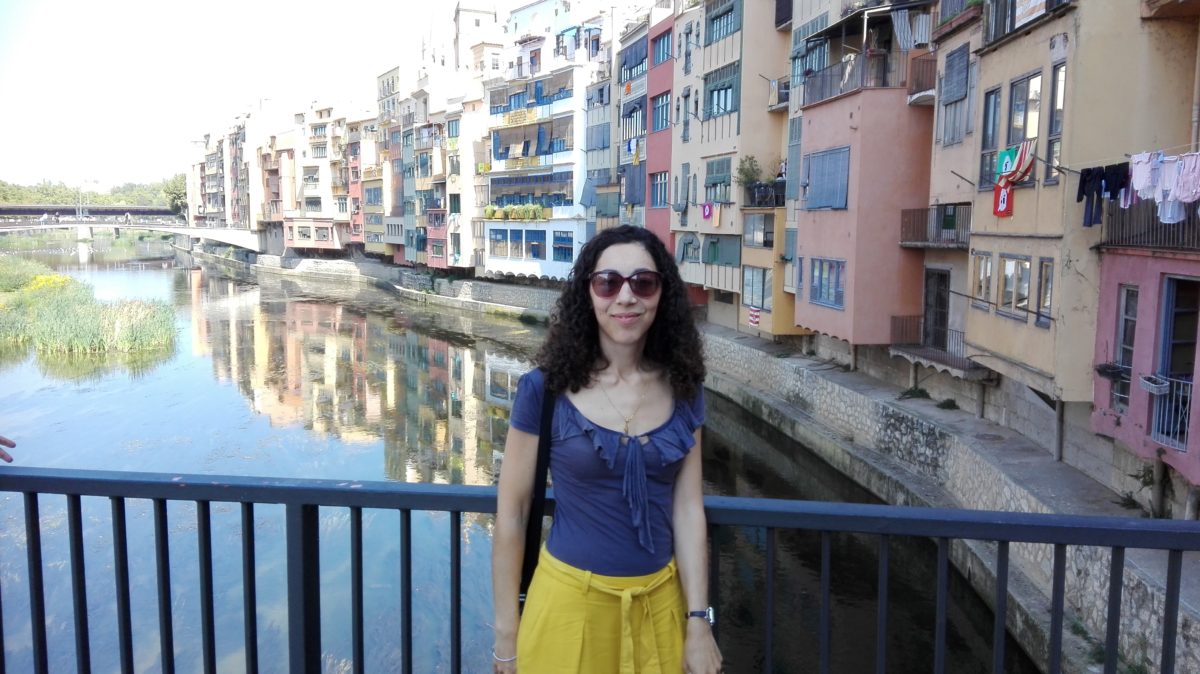
Girona: 7 things not to miss in the lovely Catalan city
April 27, 2018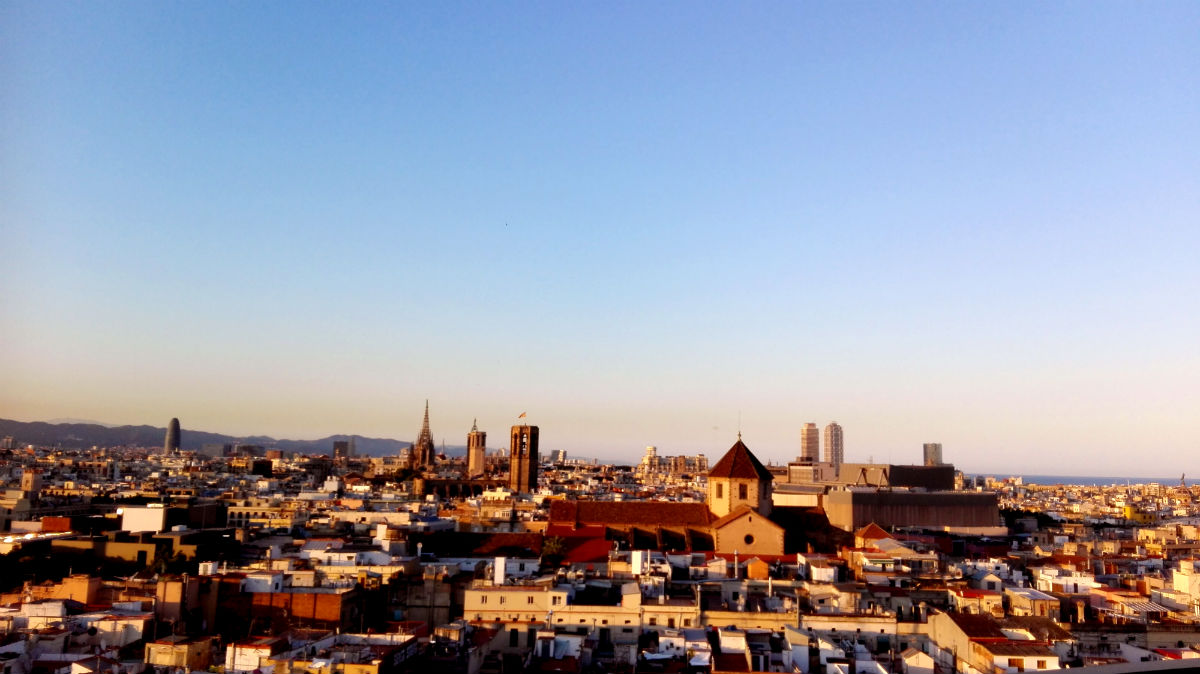
10 best things to do in Barcelona in the summer
August 9, 2018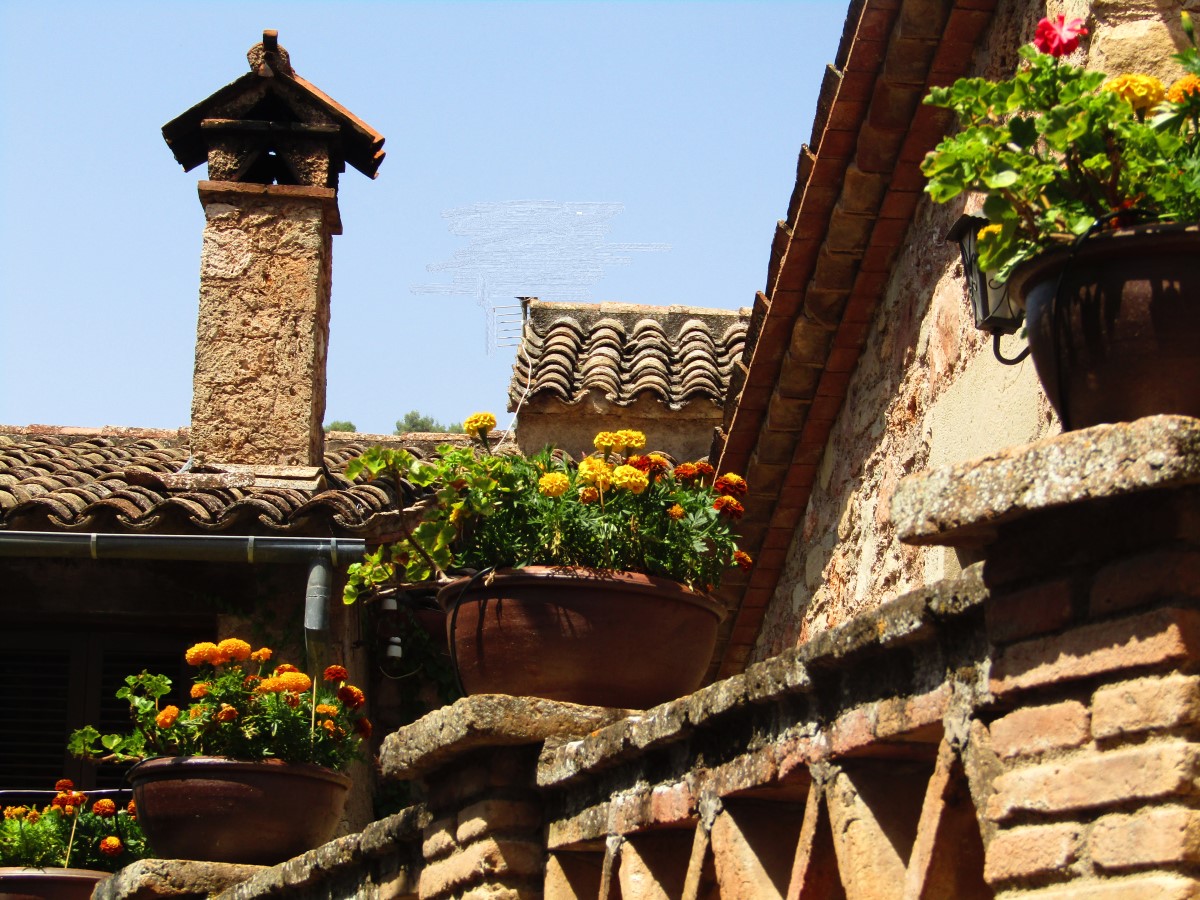


One Comment
Pingback: